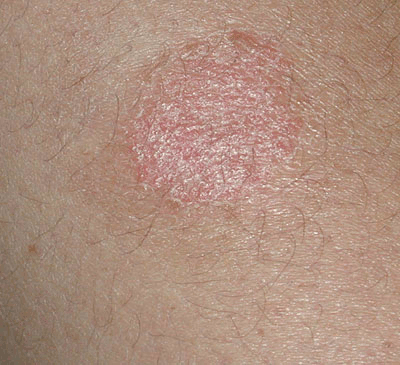Discoid Eczema or Nummular Eczema Treatment
Eczema-Ltd III is an excellent treatment for discoid eczema (nummular eczema). Eczema-Ltd III will improve the appearance of discoid eczema, by reducing the size, irritation and get rid of the discoid eczema.
Eczema-Ltd III is a great product by itself, but we highly recommend using an oil to help heal and protect the skin. There are a couple of products on the market that will do just that. Jojoba oil is non-allergenic and will not clog the pores, jojoba also mimics the skin natural producing oil. Jojoba can be bought at GNC, Health food store and online aswell, then there is safflower oil which is relatively close to Jojoba, but is less expensive.
To understand how Eczema-Ltd III works click here
Causes of Discoid Eczema
The cause of discoid eczema is not known, but it usually occurs in cold weather and is most common in people who have dry skin. Typical aggravating factors in discoid eczema include:
- Hot weather
- Stress
- Fabric softeners
- Allergies
- Soaps and detergents
- Wearing wool clothing
- Bathing more than once a day
- Minor skin injury such as an insect bite or a burn may instigate an episode
- Dry skin in the winter months can cause dry non-itchy resulting in round patches.
In younger people, discoid eczema tends to be seen in conjunction with atopic eczema. In adults it is said to be possibly associated with stress, local irritation of the skin, and drinking too much alcohol.

Symptoms of Discoid Eczema
Discoid eczema can affect any part of the body with particular emphasis on the lower leg. One or many patches appear, and may persist for weeks or months. The majority of patches are round or oval, hence the name 'discoid' or 'nummular' dermatitis, which refers to their disc or coin shape. They can be several centimeters across, or as small as two millimeters.
These well-defined patches are pink, red, or brown. They have a dry cracked surface or a bumpy, blistered or crusted surface. Discoid eczema may be extremely itchy, or scarcely noticeable. The skin between the patches is usually normal, but may be dry and irritable.
The patches may clear up without leaving a sign. However, in darker skin, marks may persist for months. These may be dark brown (post inflammatory hyper pigmentation) or paler than surrounding skin (post inflammatory hypo pigmentation).
Occurrence of Discoid Eczema
Discoid eczema, also called nummular eczema, varicose eczema, or gravitational eczema are 'coin shaped' read patchy rashes that appears on the lower legs or the trunk of the body. Some confuse it with 'ringworms' but there are no parasites involved, just irritated red skin. Some think of discoid eczema the same as atopic eczema. If bacteria invades the dry patchy skin, an infection can occur and antibiotics may be needed on the seeping and crusty skin areas.
Discoid eczema most often affects the lower part of the body with most occurrences on the lower legs, back, buttocks and arms. The symptoms are most often itchy, scaly and crusty skin.
Discoid eczema may be also called varicose eczema as it often is found in the elderly. Most often varicose eczema is found in the leg veins and thus it is also called gravitational eczema as there is a blood circulatory problem in most of the elderly patients. Discoid eczema is not hereditary. Atopic dermatitis is not related to allergies nor asthma. Bacteria infections can become present if conditions are not sanitary with resulting infections.
This type of eczema shows as discrete coin-shaped patches of eczema on the limbs. It can occur:
- on otherwise normal skin
- with generally dry skin
- with atopic eczema
Discoid eczema can affect all age groups and both sexes, but is usually associated with middle-aged or older men.
